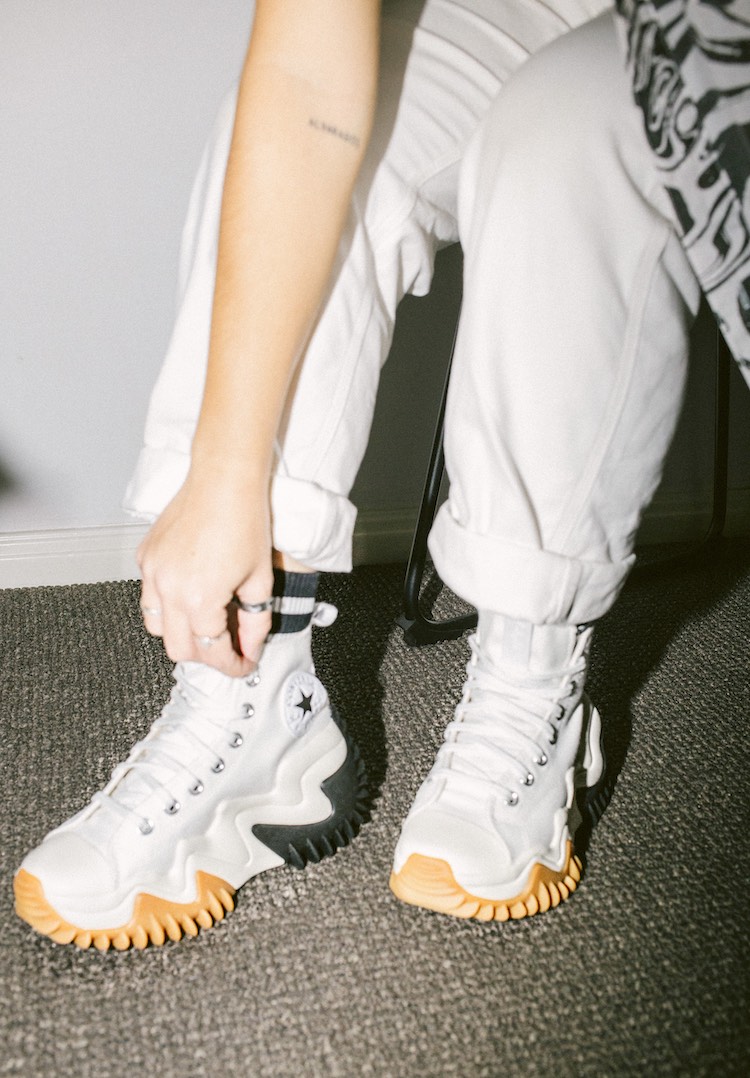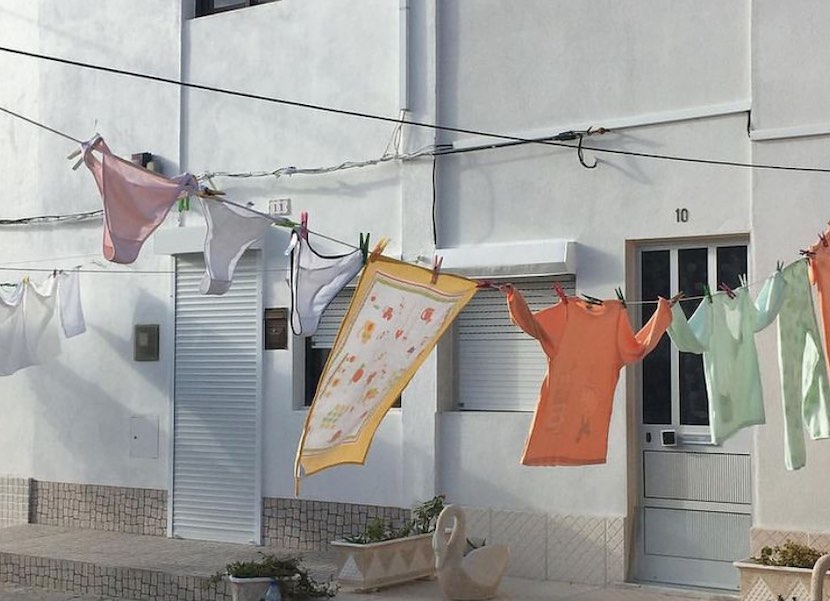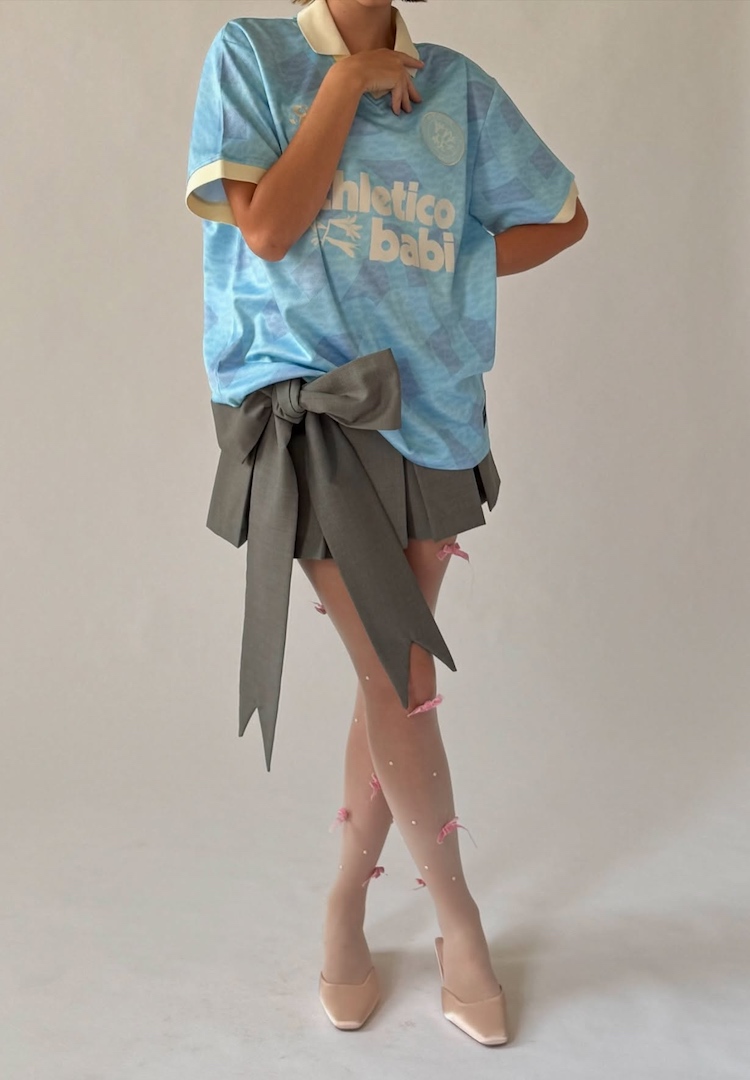If renting clothing really is worse for the planet than sending it straight to landfill, what do we do instead?
IMAGE VIA @leiabryans/INSTAGRAM
Words by Eleanor Wilson
Is it time to throw in the (sustainably sourced) towel?
Last week, Dazed released an article titled ‘Renting Clothes Is Worse for the Planet Than Just Throwing Them Away’, based on findings from a new study by Environmental Research Letters (ERS).
The study analysed the environmental impacts of different end of life approaches to apparel, including extended use, reselling, recycling into raw materials, renting clothing, and standard use with waste disposal. The report concluded that of the five end of life methods, clothing rental has the biggest impact on the environment.
Interested in sustainability? Us too. Discover more in our Fashion section.
Like me, your initial reaction to these findings may be a defeated “Well, fuck”. Environmentally conscious shoppers like myself believed we had found the sweet spot of consumerism. We thought we could satisfy our desire for ‘newness’ by renting or purchasing second-hand clothing, while also disconnecting ourselves from the dark underbelly of the fast fashion market.
Outwardly, it seems the sustainable fashion movement is growing stronger by the day. The synchronous clattering of coat hangers in op shops across the country has never been louder, and the fashion rental market is expected to reach $2.57 billion by 2023.
So, to put it bluntly, reading this study felt like a giant slap in the face. But an analysis of the study by The Industry Fashion noted some of the standards used in the research landed a considerable distance out of the ballpark, so to speak.
For instance, the study was conducted based on the assumption each piece of clothing, including the ‘standard use and waste disposal’ piece, is worn 200 times. In reality, research shows new pieces of clothing are only worn an average of seven times before they are discarded.
It also assumed that customers each drive two km to collect their rental items, which would generate a lot of emissions, when many rental services send their packages by post. Regardless of the perceived accuracies or inaccuracies of the study, the research topic acts as a great conversation starter about the future of the fashion rental market.
Don’t dismiss the clothing rental industry just yet
Sustainability expert Dr Taylor Brydges says the efficacy of sustainable clothing rental is heavily reliant on its business model. A rushed ‘guide to business in fashion rental’ will present you with three different approaches to clothing rental, according to Taylor.
There’s the peer-to-peer market; that’s your smaller, eCommerce, run out of your back garage rental system. Then there’s rental subscription; businesses like GlamCorner, where you pay a monthly fee, get sent a bunch of clothes for a month and send them back when you’re done. Finally, you have dress rental; that’s your special occasion, high school formal style dress rental.
Taylor says of the three, the peer-to-peer market is the least cost-effective. “There’s so much labour per transaction when you’re doing rentals. You have to have a website, social media, then you have to have a place to store the clothing, get the clothing, package it, mail it out, get it sent back, assess the quality of it, then put it back on the website and then start the whole process again,” Taylor explains.
“And that has to be low cost to compete with the incredibly low-cost new clothing… so that peer-to-peer bubble is really difficult to monetise.” So perhaps the ERS study has a point. Particularly when it comes to the repeated transport of rented clothing, the rental industry could have a considerable environmental impact. But in an effort to decrease overall garment production, it is still a valuable and affordable platform for fast fashion consumers to transition to.
Is a ‘clothing library’ the future of sustainable fashion?
In a recent Instagram post, feminist author Clementine Ford planted the seedling to a rental initiative that could, potentially, supersize the clothing rental game in Australia. “There is no point in buying new things that will be worn once or twice – let’s just share a big closet,” she wrote in the post.
Offering free hire of her eccentric wardrobe to her legion of 180,000 Instagram followers, in a way Ford’s post is a direct protest to the ‘wear it once’ consumerist culture so commonly endorsed on Instagram.
But beyond the typical ‘peer to peer’ rental, Ford also suggested local councils “set up shipping containers that could be rented by people to do ‘share wardrobes’”.
View this post on Instagram
Yes, the idea of a giant community wardrobe does give slight ’70s commune vibes. And while small wardrobe sharing events are becoming more popular among Facebook groups and local markets, a large-scale edition would require a great deal of trust and determination from the community for it to work well.
Having said this, we must remember the rental system is by no means a contemporary concept. The system of borrowing, using and returning has been pivotal to societal functioning for centuries.
From houses to cars, to laundry services and books, if we can’t financially afford to own something, we rent it. And in the case of the garment industry, which is the second most polluting industry behind oil, we certainly can’t afford the environmental consequences of the sector any longer.
So, could a large-scale ‘clothing library’ initiative, like the one proposed by Ford, become somewhat of a standard method of sustainable, affordable clothing for future generations? Taylor seems to think so.
“I think it would be specifically good to set it up as some sort of non-profit or social enterprise, where you go off the co-op model – everyone gives ten pieces of clothing, you volunteer an hour to work there, and like Clementine suggested, they can send it out to you, but you’ll be responsible for cleaning,” she theorised. “And that makes a lot of sense to keep costs low.”
View this post on Instagram
But as much as we try to decrease the cost per wear of our garments, or rewire our brains to escape the trap of the ‘consumer psyche’, the root source of the problem at hand is the production of new garments. And despite our efforts, garment production is still increasing.
Every year the average Australian consumes 27 kilograms of textiles, making us the second-largest garment consumers in the world. What’s more worrying, is that 85 per cent of that – 23 kilograms – is then discarded to landfill.
Individual action in regard to any social issue is by no means a useless feat, but sustainable methods of garment consumption will only make a difference if it results in a decrease in the number of new garments being produced.
As Taylor notes, “We still need to hold the big brands accountable and demand better practises from them as well… because renting something isn’t going to change things for garment worker rights in a country far away.”
Don’t stop renting clothing because it’s ‘just as bad as shopping brand new’. Like many social movements, the individual action we take to shop sustainably is not only directed towards changing the practices of big corporations. It also acts as a domino effect – a source of inspiration and an example for others.
Most of us support living wages for garment workers and understand the dangers of climate change, but the temptations of consumerism are powerfully enticing. So if we can show those around us that it’s easy to reduce our fast fashion consumption and look damn good doing it, it may just push them to make their own changes. And hopefully, the dominoes continue to fall in the right direction.
To learn more about fashion resale, head here.













